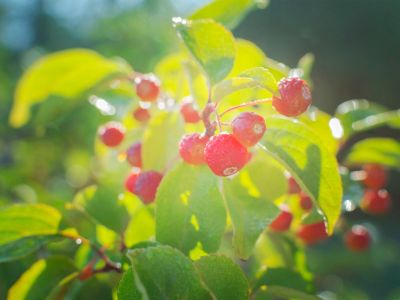Why Ornamental Tree Has Fruit
Is fruit from ornamental trees good to eat? It’s hard to pinpoint a real ornamental tree definition, since many trees are grown just as much for their fruit as for their appearance. In fact, a new trend is cropping up in showcasing tasty, high yield fruit trees as ornamentals in the garden and landscape. There are plenty of pear, apple, plum, and cherry trees that are cultivated equally for their taste and their appearance. Some trees, however, are bred as ornamentals and produce fruit more as an afterthought. These trees include:
Crabapples Chokecherries Purple-leafed plums
The edible ornamental fruits of these trees have not been bred for their flavor and, while completely edible, are not very pleasant eaten raw. They are, however, perfectly palatable and actually quite popular in pies and preserves. Purple-leafed plums, in particular, rarely yield high amounts of fruit, as they bloom early in the spring before pollination is in full swing. The small brown fruits found on ornamental pears (like Bradford pears), on the other hand, are inedible. If you are unsure of a fruit’s edibility, try to determine its exact variety to be sure and, of course, always err on the side of caution.
Some Ornamental Non-Ornamentals
If you’re looking to plant a tree that’s both spectacular and tasty, a few varieties include:
Double Delight nectarine Red Baron peach Shiro plum Splash pluot
All of these offer fantastic ornamental flowers in the spring, followed by rich, high yielding fruit in the summer.
